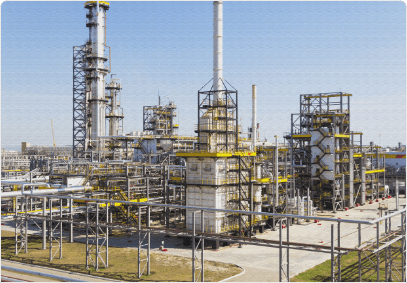Some Known Questions About Roar Solutions.
Some Known Questions About Roar Solutions.
Blog Article
Roar Solutions Can Be Fun For Everyone
Table of ContentsOur Roar Solutions StatementsThe 8-Second Trick For Roar SolutionsNot known Details About Roar Solutions
In order to secure installations from a potential surge a technique of analysing and identifying a potentially hazardous location is required. The objective of this is to guarantee the correct option and setup of tools to eventually prevent a surge and to ensure safety and security of life.
(https://www.interweave.com/plus_old/members/roarsolutions/profile/)
No tools should be installed where the surface temperature of the devices is above the ignition temperature level of the given hazard. Below are some common dirt hazardous and their minimum ignition temperature level. Coal Dirt 380C 225C Polythene 420C (thaws) Methyl Cellulose 420C 320C Starch 460C 435C Flour 490C 340C Sugar 490C 460C Grain Dirt 510C 300C Phenolic Material 530C > 450C Aluminium 590C > 450C PVC 700C > 450C Soot 810C 570C The possibility of the risk being present in a concentration high enough to trigger an ignition will certainly differ from place to area.
In order to identify this threat an installment is split into areas of threat relying on the quantity of time the dangerous is present. These areas are referred to as Zones. For gases and vapours and dusts and fibers there are three zones. Area 0 Zone 20 A dangerous environment is highly most likely to be existing and may exist for extended periods of time (> 1000 hours per year) or also constantly Zone 1 Zone 21 An unsafe ambience is possible but not likely to be present for extended periods of time (> 10 450 C [842 F] A classification of T6 means the minimal ignition temperature level is > 85 C [185 F] Dangerous area electric equipment possibly created for use in greater ambient temperature levels. This would certainly suggested on the ranking plate e.g. EExe II C T3 Ta + 60C( This indicates at 60C ambient T3 will not be gone beyond) T1 T1, T2, T3, T4, T5, T6 T2 T2, T3, T4, T5, T6 T3 T3, T4, T5, T6 T4 T4, T5, T6 T5 T5, T6 T6 T6 A T Class ranking of T1 indicates the optimum surface area temperature created by the instrument at 40 C is 450 C. Thinking the associated T Course and Temperature rating for the devices are appropriate for the location, you can always utilize an instrument with a much more stringent Department rating than needed for the location. There isn't a clear answer to this inquiry. It really does rely on the sort of devices and what repairs need to be performed. Equipment with certain examination procedures that can't be done in the field in order to achieve/maintain 3rd party ranking. Must return to the manufacturing facility if it is prior to the tools's service. Field Repair Service By Authorised Employee: Difficult testing may not be needed nonetheless specific procedures may need to be adhered to in order for the equipment to maintain its third celebration score. Authorized personnel should be utilized to do the job appropriately Repair must be a like for like replacement. New component should be taken into consideration as a straight substitute requiring no special testing of the devices after the repair service is total. Each tool with a dangerous score need to be reviewed independently. These are described at a high level listed below, however, for more comprehensive info, please refer directly to the guidelines.
Roar Solutions for Dummies
The tools register is a detailed database of equipment documents that consists of a minimum set of areas to recognize each product's location, technological parameters, Ex lover classification, age, and environmental information. The ratio of In-depth to Close evaluations will certainly be established by the Devices Risk, which is assessed based on ignition danger (the likelihood of a source of ignition versus the probability of a combustible atmosphere )and the unsafe area classification
( Zone 0Area 1, or 2). Implementing a durable Risk-Based Evaluation( RBI )strategy is critical for making sure compliance and safety and security in handling Electric Devices in Hazardous Locations( EEHA).
The Main Principles Of Roar Solutions

In terms of eruptive danger, a dangerous area is a setting in which an explosive ambience exists (or may be anticipated to be present) in amounts that need special preventative measures for the building and construction, installation and usage of devices. high voltage courses. In this write-up we explore the obstacles encountered in the office, the risk control procedures, and the required competencies to function securely
It is a repercussion of modern-day life that we produce, save or manage a series of gases or fluids that are regarded flammable, and a variety of dirts that are considered flammable. These substances can, in specific problems, create explosive ambiences and these can have major and unfortunate consequences. A lot of us are acquainted with the fire triangle eliminate any one of the three components and the fire can not occur, however what does this mean in the context of hazardous areas? When damaging this down into its easiest terms it is essentially: a combination of a certain quantity of launch or leak of a certain compound or material, combining with ambient oxygen, and the visibility of a source of ignition.
In many instances, we can do little check my source about the levels of oxygen in the air, however we can have considerable impact on resources of ignition, for instance electrical devices. Harmful locations are recorded on the harmful location category illustration and are recognized on-site by the triangular "EX-SPOUSE" indicator. Below, among various other key information, zones are divided right into 3 types depending upon the danger, the probability and period that an explosive environment will exist; Zone 0 or 20 is deemed the most hazardous and Area 2 or 22 is regarded the least.
Report this page